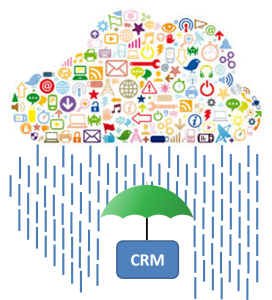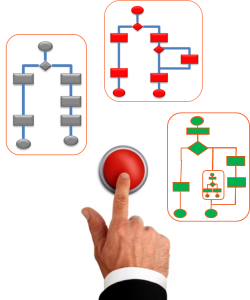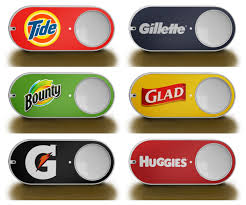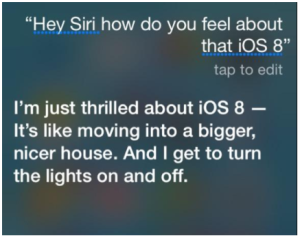For several years Customer Relationship Management (CRM) applications have attempted to sharp elbow their way into the heart of the enterprise. The CRM application has capitalised on the fact that customer experience has emerged as a significant business differentiator requiring organizations to deliver consistency and continuity in how they manage customer data from opportunity, through on-boarding to customer support. It’s not surprising then that CRM vendors see the Internet of Things (IoT) as another technology to absorb into its ecosystem.
So will CRM continue its enterprise land grab and does it have a major role to play in the IoT? For a variety of reasons I will explain below the answer has to be no.
The Future of the IoT is Services not Devices
CRM vendors have a device centric view of the IoT. Their argument goes that the CRM application already manages our “things” such as loyalty cards, our mobile phones and vehicles and the IoT will simply be a continuation of this. This vision of the future has been driven by the growth of consumer IoT devices such as wearables and smart home automation technologies. It is a mistake however to view the IoT in terms of devices. The real power in IoT is in the data created by the sensors themselves. Organizations that can utilize this data and deliver services based on this data will dominate the IoT market.
Already some of the most successful commercial IoT solutions are providing services rather than simply devices to consumers. Examples include in-car telematics, used to monitor driver performance and to adjust insurance premiums and heart implants that send data to physicians that can be analysed to identify any slowing of heart rhythm or rapid heartbeats. In the public realm, IoT will be used within Smart Cities to provide services to constituents that will, for example, reduce congestion, optimize energy use and support public safety. The common theme in all of these examples is that the IoT is being used to provide services with little or no input required by the individual. The IoT and the devices themselves are for the most part invisible. The vast bulk of IoT activity will be invisible, machine to machine not device to customer or vendor.
monitor driver performance and to adjust insurance premiums and heart implants that send data to physicians that can be analysed to identify any slowing of heart rhythm or rapid heartbeats. In the public realm, IoT will be used within Smart Cities to provide services to constituents that will, for example, reduce congestion, optimize energy use and support public safety. The common theme in all of these examples is that the IoT is being used to provide services with little or no input required by the individual. The IoT and the devices themselves are for the most part invisible. The vast bulk of IoT activity will be invisible, machine to machine not device to customer or vendor.
Many of the commercial and smart home technologies we see today are really just gimmicks as already available sensor and Wi-Fi technology wait on other essential components of the IoT ecosystem to catch up that will enable IoT driven services to be launched. In this IoT services ecosystem the role of CRM will be limited.
Data Loses its Value within Seconds
As previously discussed the real power of the IoT is in the data created by the sensors. The majority of data created by sensors will begin to lose value within seconds of being generated. Weather data, traffic congestion, pollution information, smoke and fire detection, location data and personal security information is constantly changing requiring real time analysis and complex event processing rather than storage in a CRM system. In this context the CRM application becomes merely a system of record providing a history of what happened. The IoT requires real time, not sometime, analytics and decisions.
The Future of Customer Service is Self-Service – Not Assisted Service
The future of customer service is self-service not assisted service. In 2015 web self-service overtook all other customer service channels. Intelligent virtual assistant (IVA) use is seeing rapid adoption across multiple industry sectors. Mobile phone vendors have been working on personal assistants since almost the development of the first app. Your mobile device comes preinstalled with apps such as calendar, reminder, notes and a ticket and boarding pass wallet and these mobile capabilities will soon be augmented with speech recognition. Today, four of the largest global IT organizations — Apple, Google, Microsoft and Amazon— offer speech recognition software. Speech recognition has the potential to transform the self-service user experience, making it a more natural experience and most importantly hands free. Speech recognition can deliver service to users anywhere and in any situation or context. It will be the user interface for IoT services. And already retailers have begun to explore the potential of voice driven self-service with for example Domino’s Pizza introducing Dom their virtual voice ordering assistant.
CRM applications are on the wrong side of the self v assisted service equation, having only a major role to play in assisted customer service.
Predictive and Proactive Customer Service is not a Business Opportunity
Another argument in favour of CRM and the IoT is that together they will deliver improved customer service. The expectation is that organizations will be able to offer proactive customer service based on alerts or status notifications from the smart devices and sensors. Again this takes a device rather than services view of the IoT.
The scenario of smart devices automatically triggering support services and outbound calls from customer service agents will certainly occur in support of high value products and services. No organization however is going to hire additional customer service agents to provide proactive customer service for low value products and services. In addition customers will be suspicious of assisted proactive service believing it’ll be used as a sales call and also may not appreciate the interruption.
We already obtain proactive customer service. For example our mobile phones, laptops gaming platforms are all automatically updated with the latest SW or firmware releases. None of us pay for this. For the most part proactive customer service will be automatic and invisible. Proactive customer service is not a business opportunity and is merely a cost of doing business in the 21st century.
Privacy Concerns will hold back Sales and Marketing
Another key benefit of IoT is the ability for vendors to track who is buying their products and how they are being used. This has the potential to transform marketing and to improve customer segmentation and targeting. The elephant in the room is however privacy. Good luck getting individual customers and businesses to allow you to mine and analyse their data. Assuming data access permission is granted what is in it for customers? Instead of cold calls will they instead get hot calls and more pushy sales reps?
A Step Too Far
The IoT is a step too far for CRM. The core components of IoT solutions will be data streaming, complex event processing, process automation technologies, business rules engines, voice recognition and biometrics. CRM systems will capture event histories and manage some IoT devices but this will be a peripheral role. CRM is suited for business today, it is a 00’s technology, it may not however be suited for the IoT driven businesses of the future.






